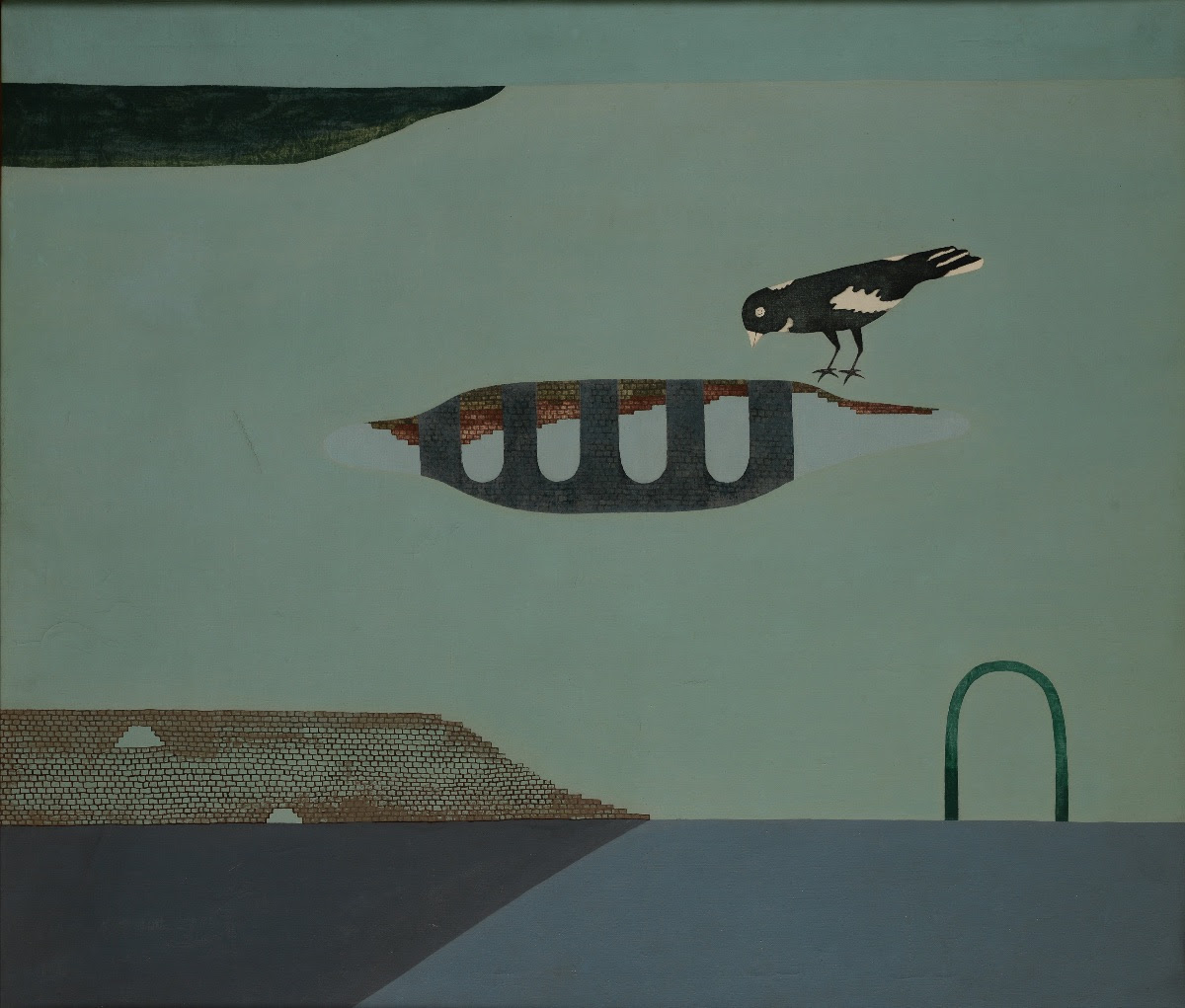
Inside the Empty Box - A Retrospective Exhibition of Prabhakar Barwe
National Gallery of Modern Art, Sir Cowasji Jahangir Public Hall, Mahatma Gandhi Road, Mantralaya, Fort, Mumbai, Maharashtra 400032. 8 Feb - 8 Mar 2019 11:00 am Onwards Open for AllNational Gallery of Modern Art
Ministry of Culture, Government of India
in collaboration with
Bodhana Arts and Research Foundation
presents
Inside the Empty Box
A retrospective exhibition deciphering Prabhakar Barwe’s life, art and mind through the medium of painting, writings and diary notations.
Curated by
Jesal Thacker
and
Shruti Das (Deputy Curator, NGMA Mumbai)
================================================
Prabhakar Barwe (1936 – 1995) was a cult name in Indian Art; “a rare intellectual mind concerned with the language of painting rather than images and sign”.
Born in a family of artists, he was initiated into Sir J.J. School of Arts by his grand uncle Vinayak Pandurang Karmarkar – who laid the foundation of his interest in art. However, from a very young age, Barwe sought to define his own language and transitioned from the academic style adapted by Karmarkar into the newly found notions of modernism and abstraction prevalent in the 50’-60’s. But he did not fall into the particular idiom of abstraction or figurative narration; his practice did not negate the figure, instead, it included the mundane objects surrounding the figure, creating an unconventional order of things. The object thus became the subject, redefining its cognitive context without deforming its formal appearance, as “apparitional flight forms”, a term defined by art critic Geeta Kapur in Pictorial Space – a point of view on Contemporary Indian Art, an exhibition conceived and compiled by her 1977.
Apparition forms, as Geeta Kapur further explains in her essay, “refers to images of reverie that appear like a flash, illuminating the spaces around marking it off from mundane space as a nimbus marks off a supermundane presence, and sets it apart in memory – suspended and transfixed. Apparitions, in the context of considerations on pictorial space imply images that establish their ambience, a ‘sacred’ or magnetic space, free from the laws of gravity and perspective, a space which in turn allows a felicitous freedom to the images for achieving levitation”.
Space is an integral aspect of Barwe’s pictorial language. The artist himself expounded the aspects of space in his unpublished article On Space and Forms written in 1990, “In painting we experience a sense of space, in a way we merge with it and transcend ourselves. As thoughts activate mind, forms and colours activate this space. We’re surrounded by forms and colours in endless ways of appearances. Transforming forms into the objects simplifies problems in relation to the space. Now forms are redefined considering only the demand of the space of the painting. Coming together in almost impossible ways, they create a new reality, which observes only one logic, logic of the space of the painting”.
Barwe was intrigued by the interrelation between the inner space that forms our mind, and the outer space that contains us and our art. He began to redefine this space – creating a distinctive order using objects from his daily life (outer space) and translating them into a notation of forms on the canvas that do not adhere to the outer order. A cognitive flux is at play here, as Barwe carefully accesses and recreates a perception that balances the outer with the inner terrain, a logic infused with sense, memory and intuition. His paintings philosophize life and the process of perception, rather than depicting a reality. Barwe imbibed everything he saw in his surrounding into his art; the mundane became his muse. Static reality found poetic rhythm in his compositions. Empty spaces held the canvas with floating formations. Objects lost their essence, only to be transformed into space-form logic as the paintings were then perceived within the quantum of an empty box.
“Inside the Empty Box” is an effort to decode and decipher the multi-dimensionality of Barwe’s practice, a dimensionality that was explored through the varying mediums of design, composition, writing and diary notations.
The exhibition will be educative on multiple levels, historicising the life and work of the artist alongside possible archives, photographs, his favourite books, poems and brief history of that period – everything that gives the viewer a complete insight into the artist. A selection of the artist’s diaries will be exhibited, creating a laboratory of thoughts, forms and concepts of the artist’s experiments. Select spaces will be designed as educative corners that engage the viewer into enhancing his/her own creativity. We want to combine the roles and functions of the laboratory, the library and the viewing room – weaving them all into a sensory and cognitive experience for the viewer.
Programs including a book release and presentation, poetry/book readings, workshops and curatorial walk-throughs would accompany the exhibition catering to all genres, especially children and art schools.
We look forward to seeing you all. More details about the exhibition opening and programs will follow soon.
Merry Christmas and a Happy New Year.
Warmly,
Jesal Thacker
===========================================
“Barwe was concerned with the language of painting; rather, with images and signs. In classical music the words don’t mean anything. You go by notes. You can express something just through notes…the same goes for painting. When you give up all those images, you become abstract. You evolve a language of painting which is very subtle. There are sign of research in Barwe’s work.”
– Excerpt from M.F. Husain’s tribute to artist Prabhakar Barwe.

